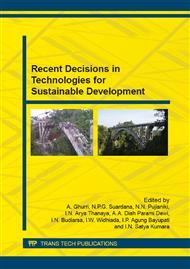p.208
p.215
p.223
p.229
p.233
p.239
p.246
p.253
p.260
Hardness Prediction Based on P-h Curves and Inverse Material Parameters Estimation
Abstract:
The Finite Element model of Vickers indentation has been developed. The model was validated against published testing data. An approach to predict the P-h curves from constitutive material properties has been developed and evaluated based the relationship between the curvature and material properties and representative stress. The equation and procedure established was then successfully used in predict the full Vickers indentation P-h curve. FE Spherical indentation models of different radius have been developed and replay file model was developed that is able to produce data of different materials properties. Two new approaches to characterise the P-h curves of spherical indentation have been developed and evaluated. One is the full curve fitting approach while the other is depth based approach. Both approaches were proven to be adequate and effective in predicting indentation P-h curves. The concept and methodology developed is successfully used to predict hardness values (HV and HRB) of materials through direct analysis and validated with experimental data on selected sample of steels. The approaches (i.e. predict hardness from P-h curves) established was successfully used to produce hardness values of a wide range of material properties, which is then used to establish the relationship between the hardness values (HV and/or HRB) with representative stress. This provided a useful tool to evaluate the feasibility of using hardness values in predicting the constitutive material parameters with reference to accuracy and uniqueness by mapping through all potential materials ranges
Info:
Periodical:
Pages:
233-238
Citation:
Online since:
July 2015
Authors:
Keywords:
Price:
Сopyright:
© 2015 Trans Tech Publications Ltd. All Rights Reserved
Share:
Citation:


